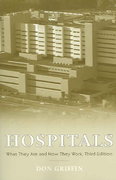Question
Prime Research is planning to introduce a new product that was expected to reach sales of Rs.16 million in its first full year, and Rs.19
Prime Research is planning to introduce a new product that was expected to reach sales of Rs.16 million in its first full year, and Rs.19 million of sales in the second year. Because of intense competition and rapid product obsolescence, sales of the new product were expected to remain unchanged between the second and third years following introduction. Thereafter, annual sales were expected to decline to 80% of peak annual sales in the fourth year and to 60% of peak sales in the fifth and sixth year. No material levels of revenues or expenses associated with the new product were expected after five years of sales. Based on experience, cost of goods sold for the new product is expected to be 55% of total annual sales revenue during each year of its life cycle. Selling, general, and administrative expenses were expected to be 12% of total annual sales. Annual Fixed Cost is expected to be Rs.2 million. Taxes on profits generated by the new product would be paid at a 35% rate.
To launch the new product, Prime Research would have to incur immediate cash outlays of two types. First, it would have to invest Rs.7 million in specialized new production equipment. This capital investment would be fully depreciated on a straight-line basis over the six-year anticipated life cycle of the new product. It was not expected to have any material salvage value at the end of its depreciable life. No further fixed capital expenditures were required after the initial purchase of equipment.
Second, additional investment in net working capital to support sales would have to be made. Innovation World generally required Rs.29 of net working capital to support every Rs.100 of sales. As a practical matter, this buildup would have to be made by the beginning of the sales year in question (or, equivalently, by the end of the previous year). As sales grew, further investments in net working capital ahead of sales would have to be made. As sales diminished, net working capital would be liquidated and cash recovered. At the end of the new product's life cycle, all remaining net working capital would be liquidated and the cash recovered.
Finally, Prime Research is expected to incur tax-deductible introductory expenses of Rs.2.5 million in the first year of the new product's sales. These costs would not be recurring over the product's life cycle. Approximately Rs.2.0 million had already been spent developing and test marketing the new product. These expenditures were also one-time expenses that would not be recurring during the new product's life cycle.
A Debt-Equity Mix of 45% and 55% is used for this project. The cost of debt, pre-tax is 7%. The risk-free rate is 5.5% and the Return from Index for the period is 14.5%. Prime Research is trading at a stock market beta of 1.38.
Questions to solve:
a. Estimate the Free Cash Flows for the Firm
b. Determine the Weighted Average Cost of Capital for the Firm.
c. Evaluate the project using the following capital budgeting techniques
i) Payback ii) Discounted Payback iii) NPV iv) IRR v) Profitability Index
d. Determine the NPV for the project if the Networking Capital Ratio reduces
to 25% of Sales, and increase to 35% of sales
e. What will be the IRR if the initial cost of the decreases by 10%, and decreases by 15%
f. What will be the NPV if the Project is funded with 50% Debt and 50% Equity?
Step by Step Solution
There are 3 Steps involved in it
Step: 1

Get Instant Access to Expert-Tailored Solutions
See step-by-step solutions with expert insights and AI powered tools for academic success
Step: 2

Step: 3

Ace Your Homework with AI
Get the answers you need in no time with our AI-driven, step-by-step assistance
Get Started


